Москва

Radial Russian metropolis, political and economic capital

The centre of Mother Russia, politically and financially if not geographically, Moscow lies as far north as Edinburgh and further east than Jerusalem. It has not always been the capital of Russia, that status has belonged to Saint Petersburg for a considerable time, but it is now one of the largest cities in Europe with around ten million inhabitants, and more billionaires than Manhattan. Whereas St Petersburg is known as the most “European” of the Russian cities, Moscow feels much more Soviet. Since the fall of the Soviet Union, things in Moscow have improved a lot for some people, and got considerably worse for others.
We visited Moscow as part of our Baltic tour in 2004, staying for three nights at the Traveller’s Guest House near Prospekt Mira in the north of the city. The hostel was part of an old Soviet hotel in a non-descript block on a street of non-descript blocks. As we were there over a weekend that allowed us to take advantage of a loophole and to not get visa registration for Moscow, as we were already registered in St Petersburg. We left as we had arrived, by train, this time trundling through the night towards Latvia.
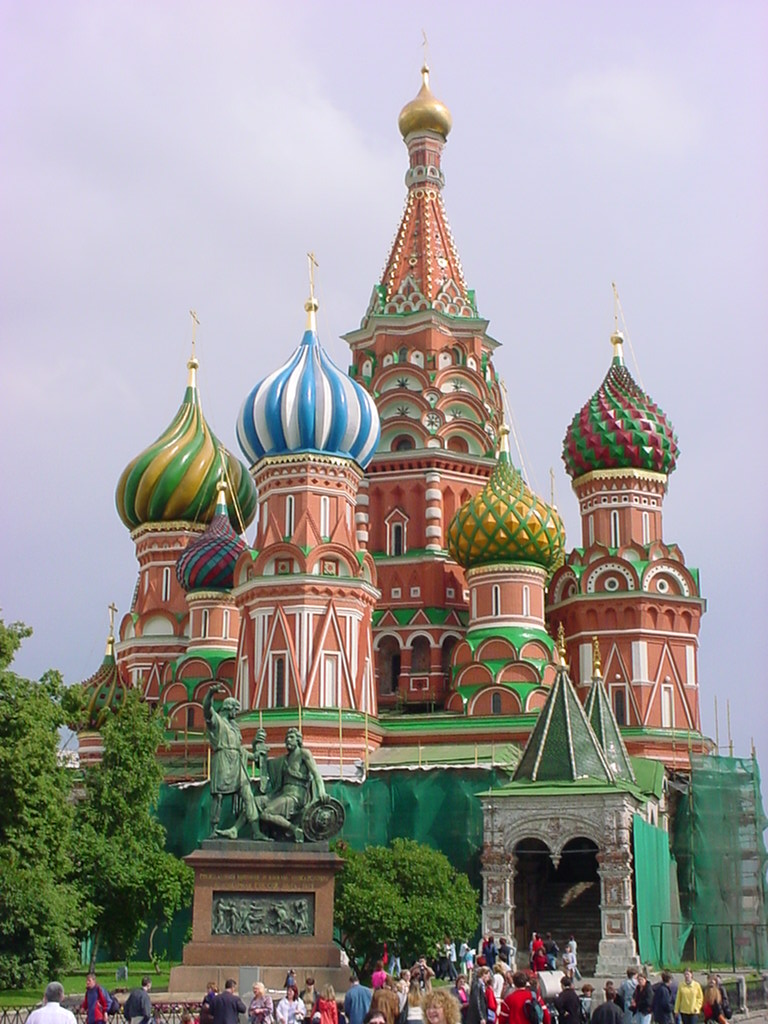
There is no other building that says “Russia” more than St Basil’s Cathedral, at the south end of Red Square. It is a cacophony of domes and colours and I was surprised to learn that it is more than 450 years old. It was built by decree of Ivan the Terrible in the mid-16th century, and has nine separate churches inside, each with its own dome.
The Moscow River divides the city in half along a meandering route, keeping the most important stuff on the north bank, not unlike London. The golden domes of the Cathedral of Christ the Saviour glisten on the water, but only since its reconstruction in 2000. It was previously dynamited by the Soviets in 1931 to make way for the never-built Palace of the Soviets, then spent several decades as the world’s largest outdoor swimming pool.
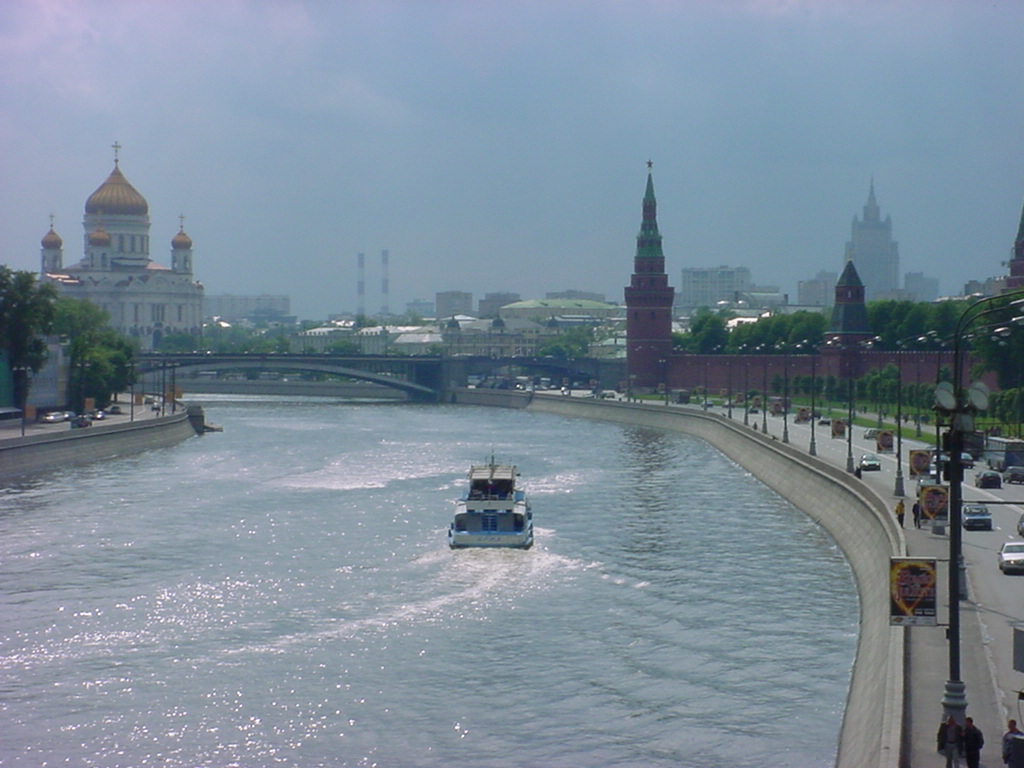

Red Square as seen from Bolshoy Moskvoretsky Bridge, with St Basil’s Cathedral on the right, and the walls of the Kremlin on the left. The limos, I’m afraid to say, were not for us.
The south wall of the Kremlin, facing onto the Moscow River. The Kremlin is a roughly triangular enclosure housing the official and residential buildings of the Russian government. The Ministry of Foreign Affairs stands tall in the distance.
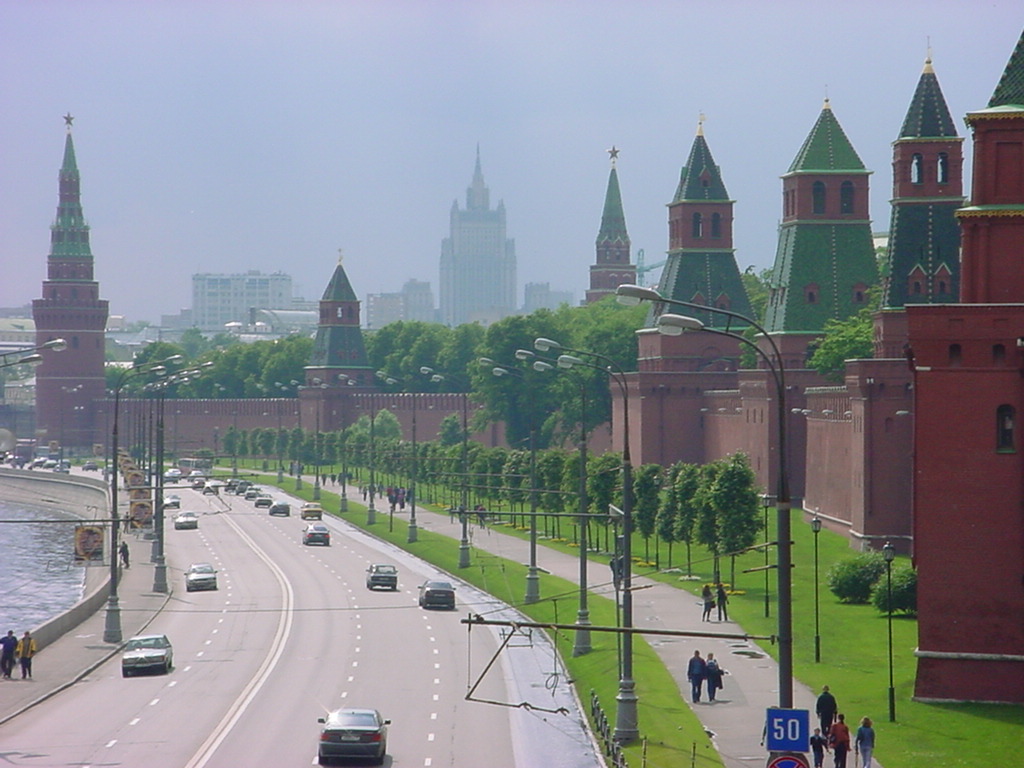

Vladimir Lenin, the great Russian revolutionary leader, seized power in 1917 during the October Revolution, becoming the first leader of the Soviet Union, and died in 1924. His final resting place is this red granite mausoleum by the Kremlin wall on Red Square. He has been chemically preserved and lies in a glass case on display to the people. Unfortunately we missed seeing him in the flesh despite waiting for an hour, as Lenin is closed after lunch. Keeping with the theme, we were subsequently denied a glimpse of Ho Chi Minh in Hanoi a couple of years later, although I did manage to see Chairman Mao in Beijing in 1989.
The State Historical Museum at the north end of Red Square, which like the walls of the Kremlin is painted red. It is the colour of the walls that gives the name to the square, as opposed to the amount of blood that has been spilled there over the centuries.
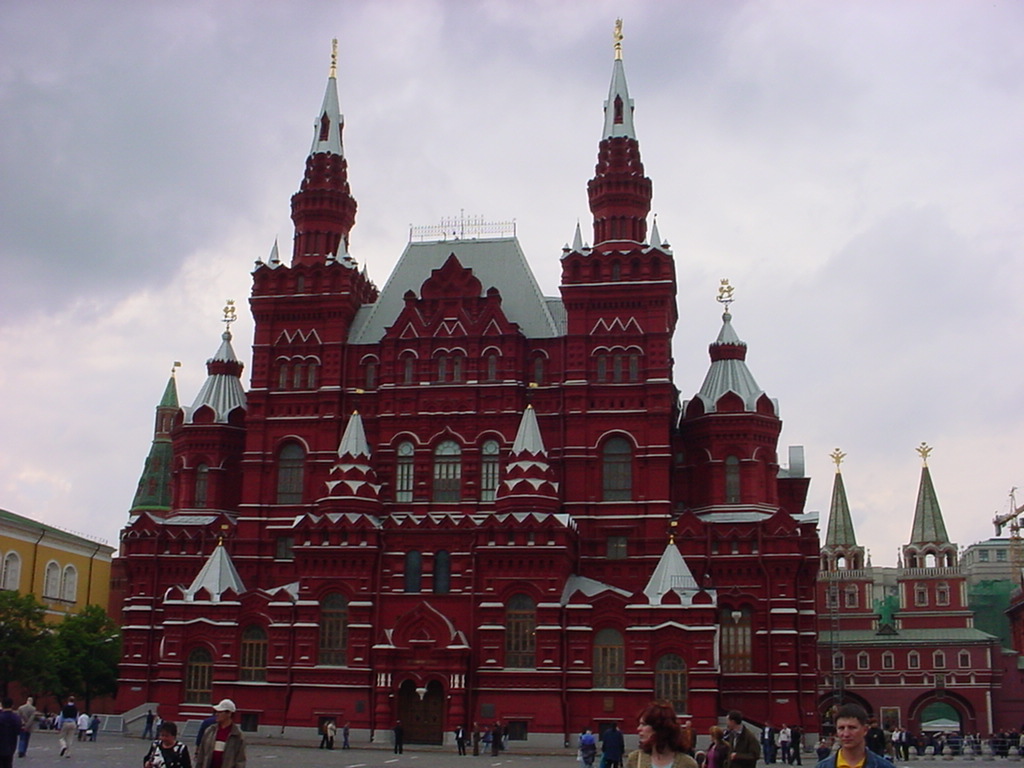
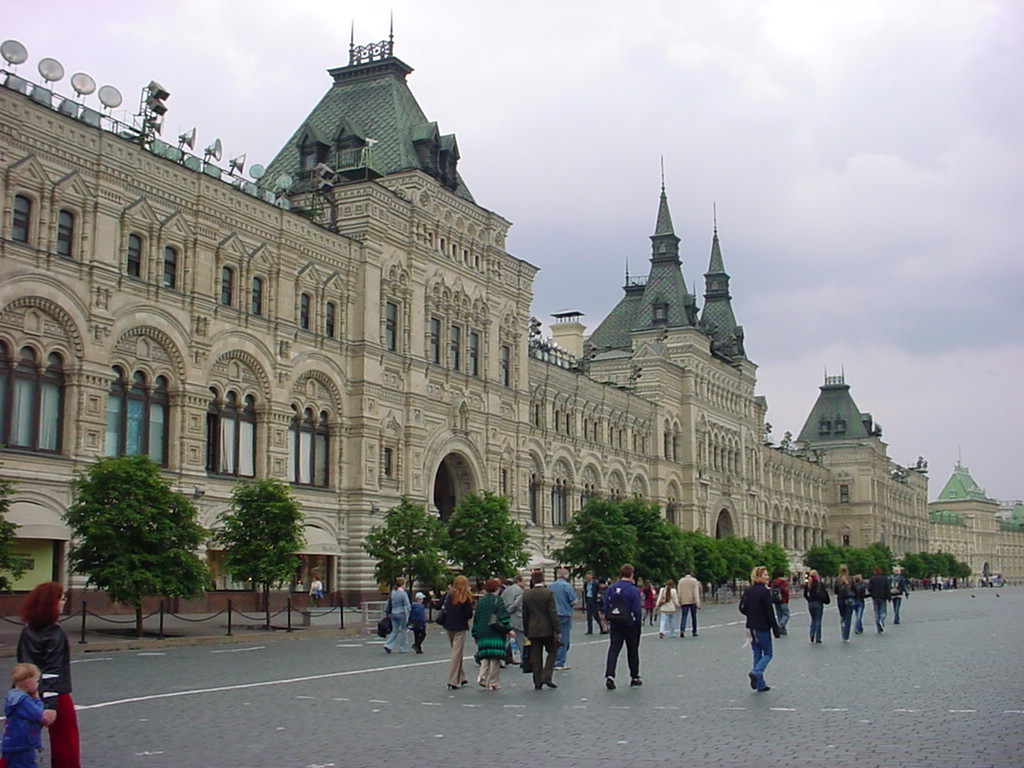
GUM or the State Department Store is perhaps Moscow’s counterpart to Harrods of London. It lines the east side of Red Square and is the best-known of all the GUMs throughout Russia. Its single operator during Soviet times was of course the Soviet state, but since then capitalism has taken hold, and it hosts many high-end outlets.
Inside GUM things are just as splendid as the exterior, with its continuous glass roof above the arcades, not unlike the Galleria Vittorio Emanuele II in Milan.
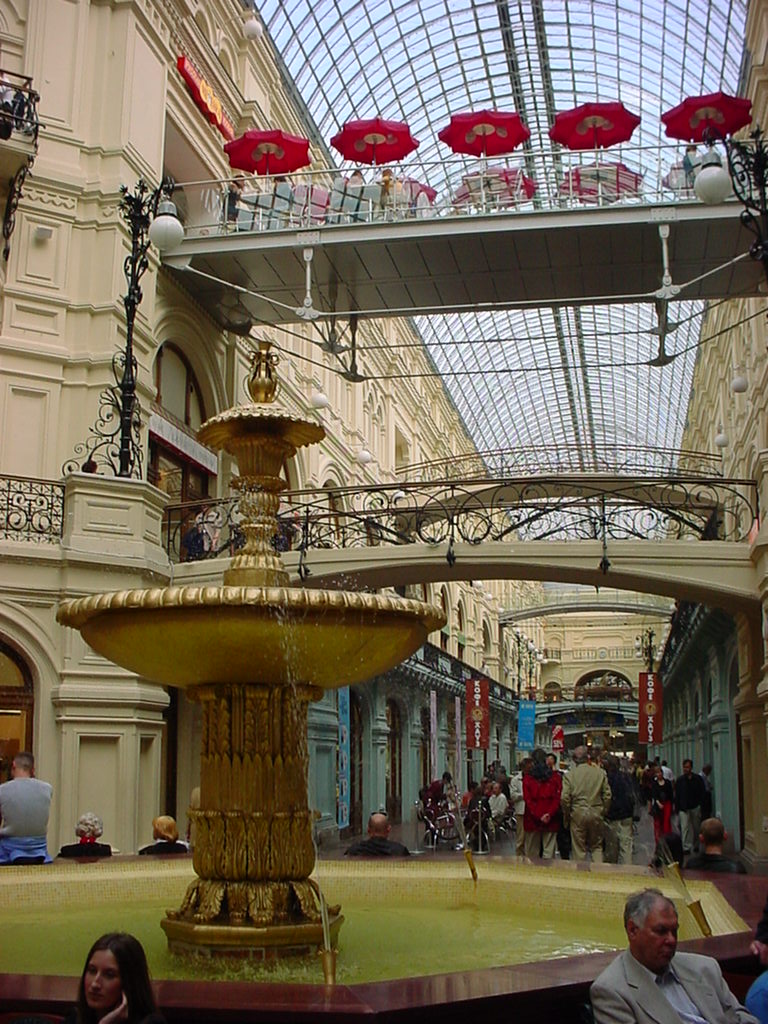
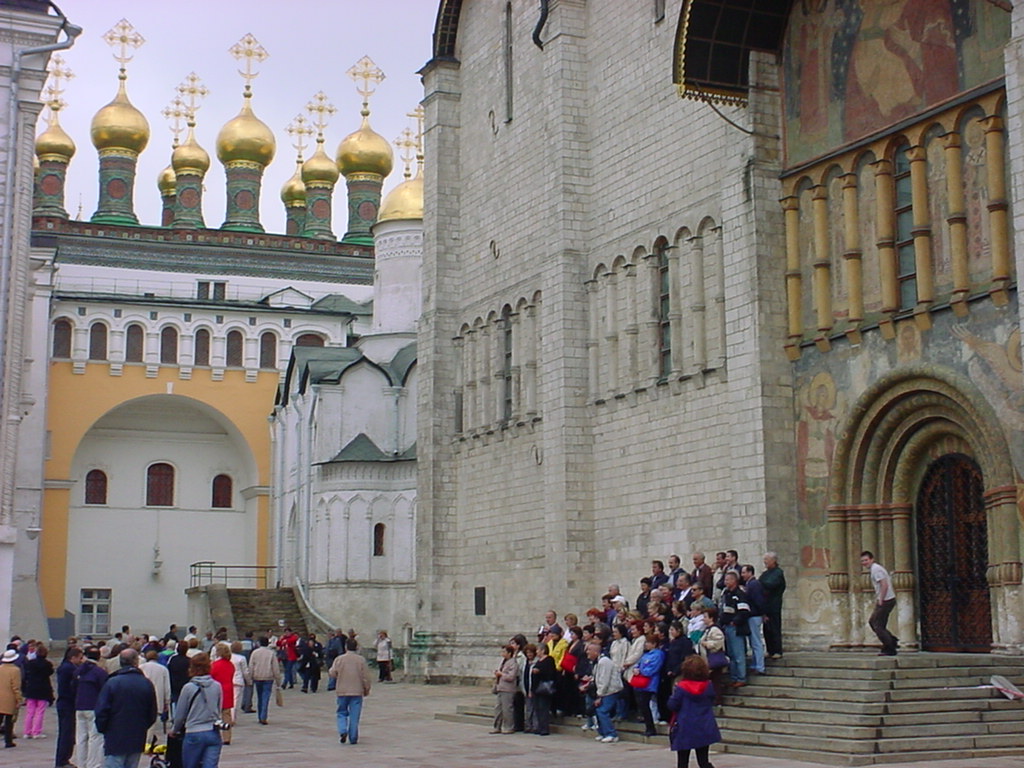
Onwards and into the Kremlin. The Cathedral of the Dormition is considered to be the mother church of the historical Grand Duchy of Moscow. It was completed in 1479 following over a century of construction, and was the place where Ivan the Terrible was crowned in 1547.
There are a great many churches within the walls of the Kremlin, all dating back hundreds of years. They are also all Russian Orthodox, and are mostly topped with the characteristic gold-plated onion-shaped domes. This is the Annunciation Cathedral on the left, and the Cathedral of the Archangel on the right.
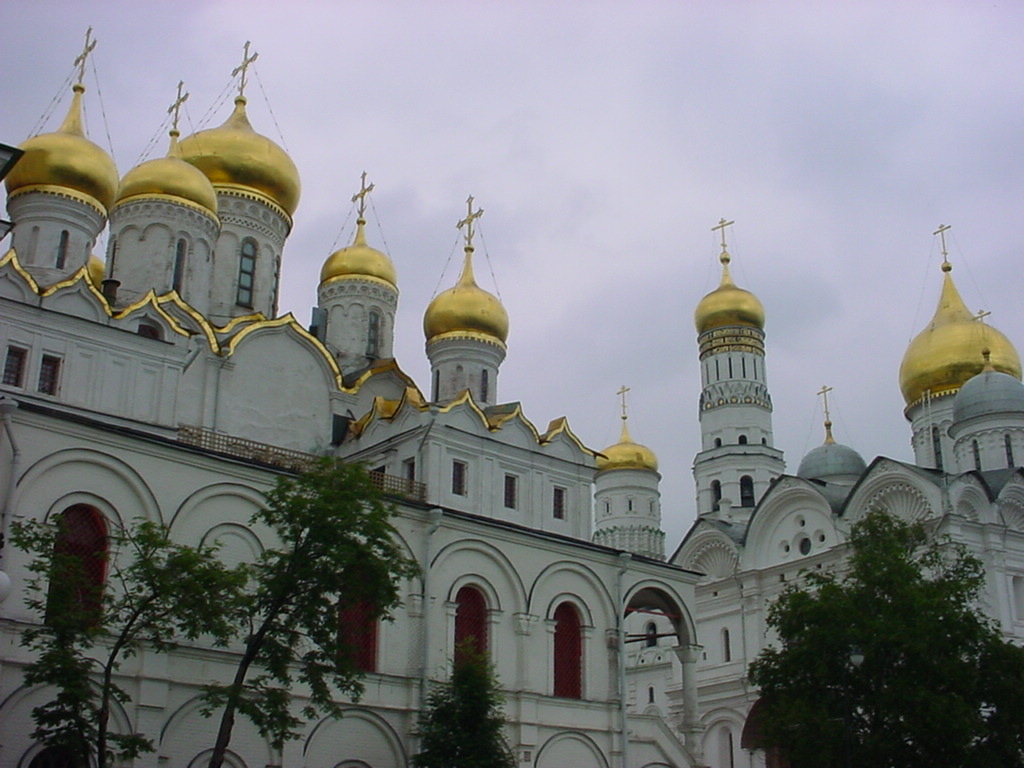
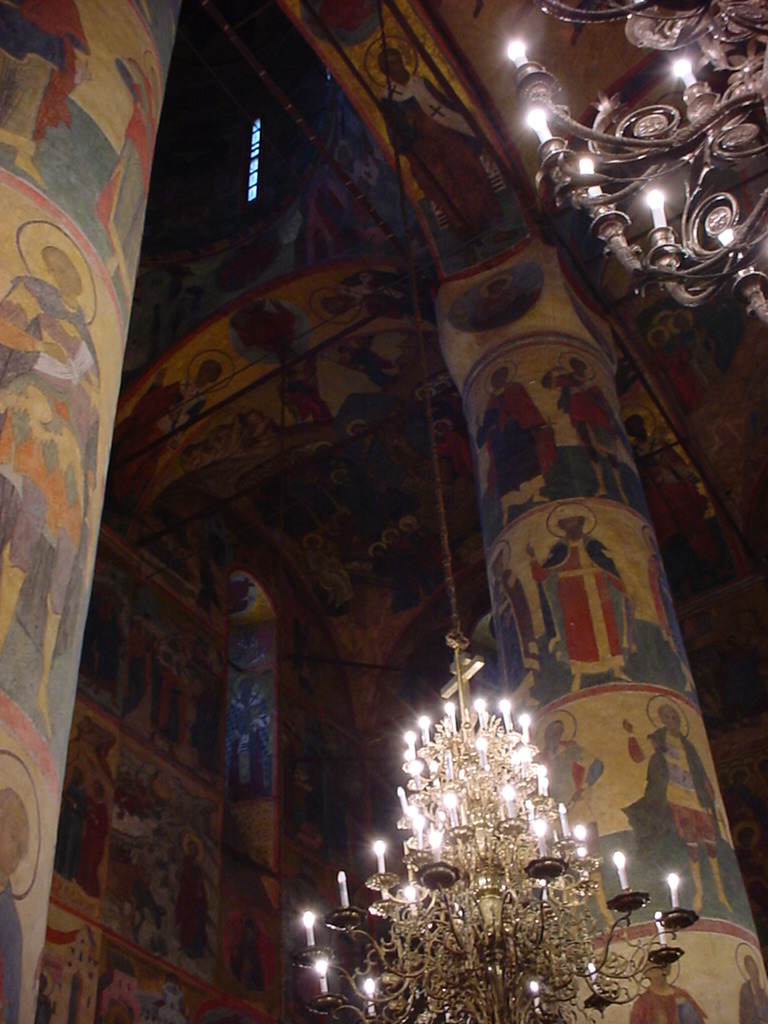
Inside the Cathedral of the Annunciation it was surprisingly dark, but every surface throughout was painted with murals and religious iconography.
The Tsar Cannon is reputedly the world’s largest at sixteen feet long, almost forty tonnes and was built in 1586 at the commission of Ivan the Terrible’s son. I have seen similarly massive cannons in Edinburgh and Jaipur. It is aimed at some buildings across the courtyard which are off-limits to tourists. There were no barriers to stop me walking over to those buildings, but there were certainly guards to shout at me when I tried.
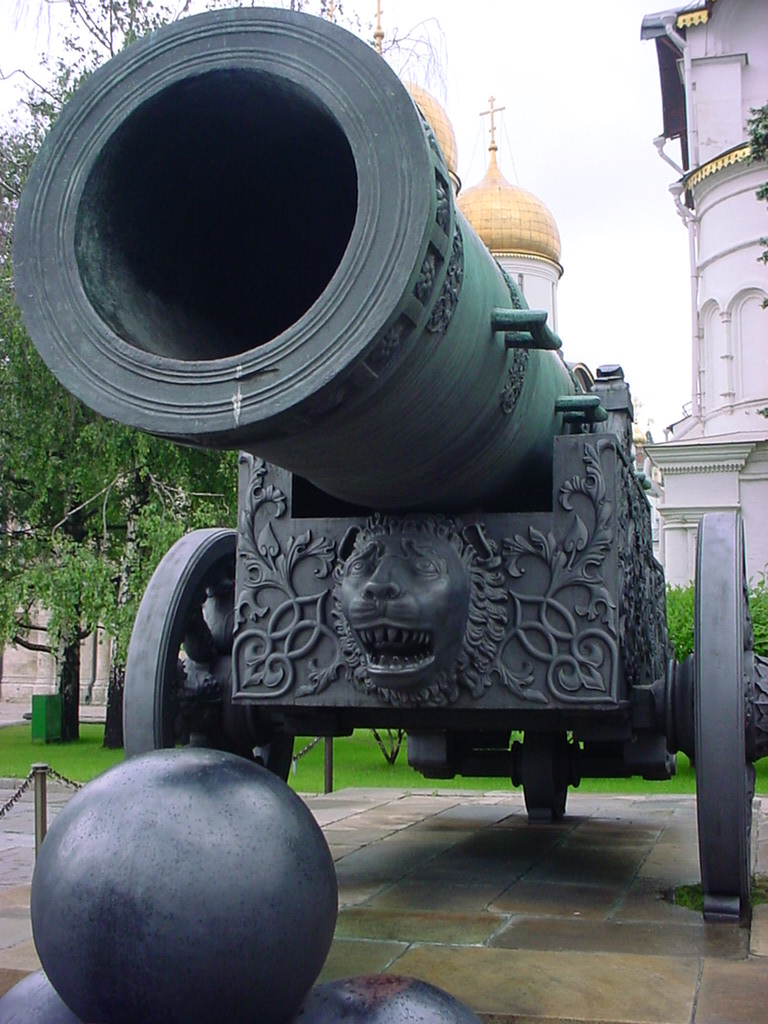
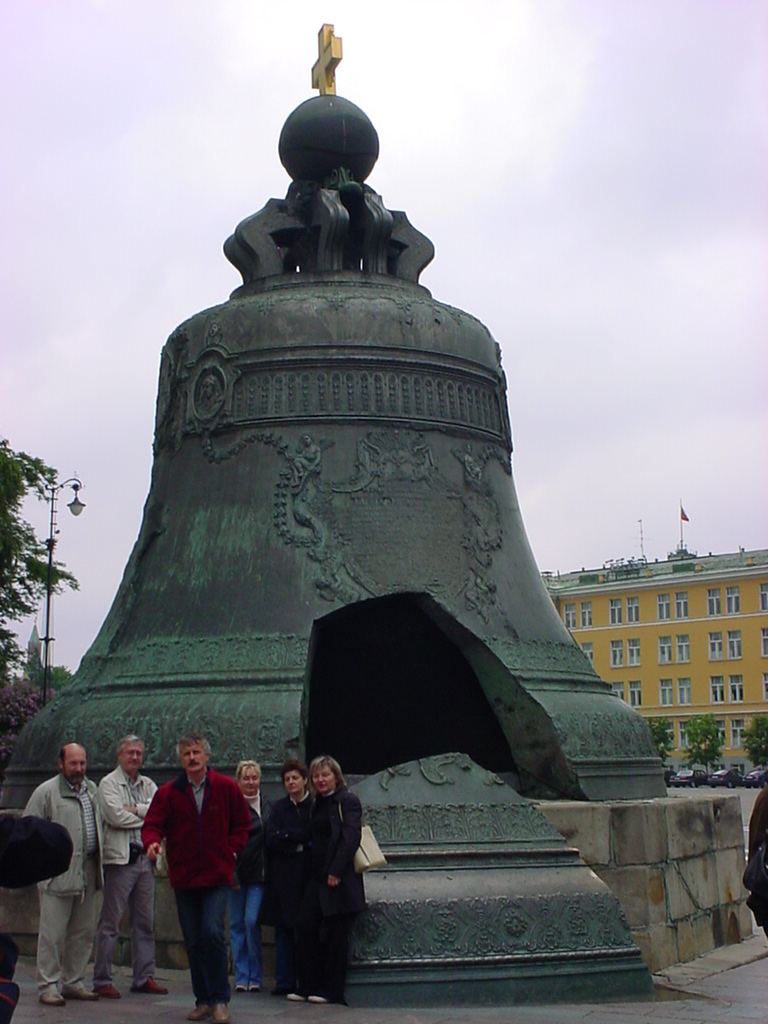
Sticking with the theme, a massive bell. The Tsar Bell is cast from two hundred tonnes of bronze, and sits at the foot of the Ivan the Great Bell Tower, a relic from the Romanov Dynasty. It has never been rung, as shortly after its commissioning in 1734 it was cracked in a fire, chipping off an 11 tonne chunk.
The Grand Kremlin Palace is the official residence of the President of Russia, and historically that of the Russian tsars when they happened to be in Moscow, which at the time was not the capital. As I loitered, an occasional large black car would sweep in or out of the courtyard.
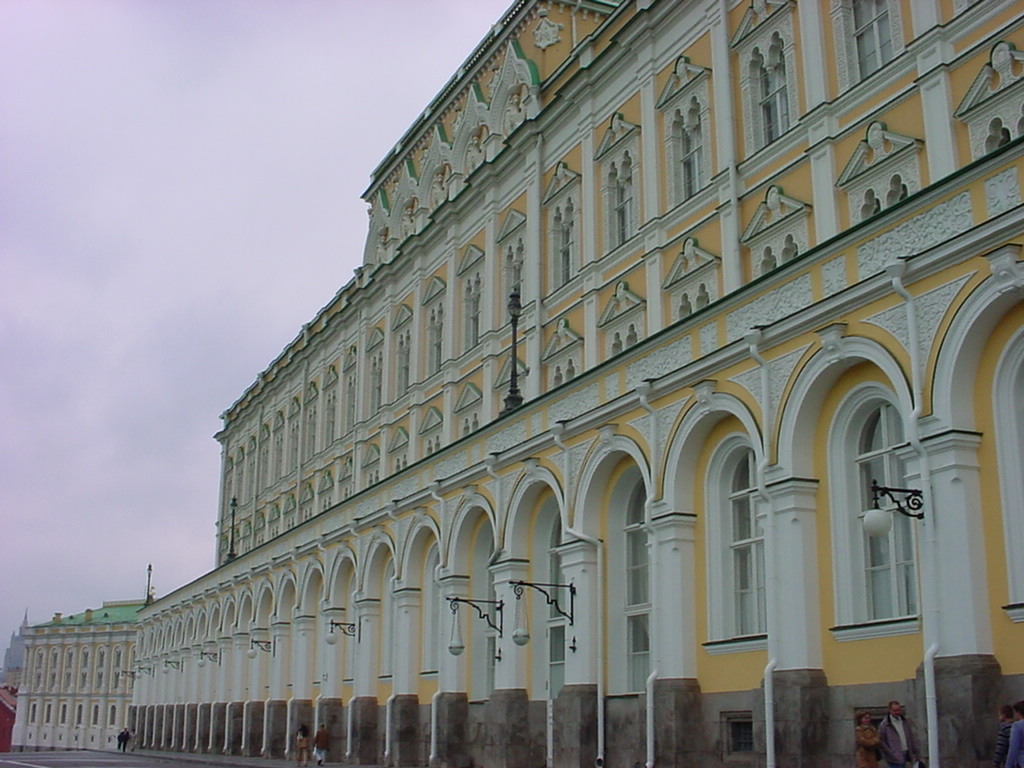
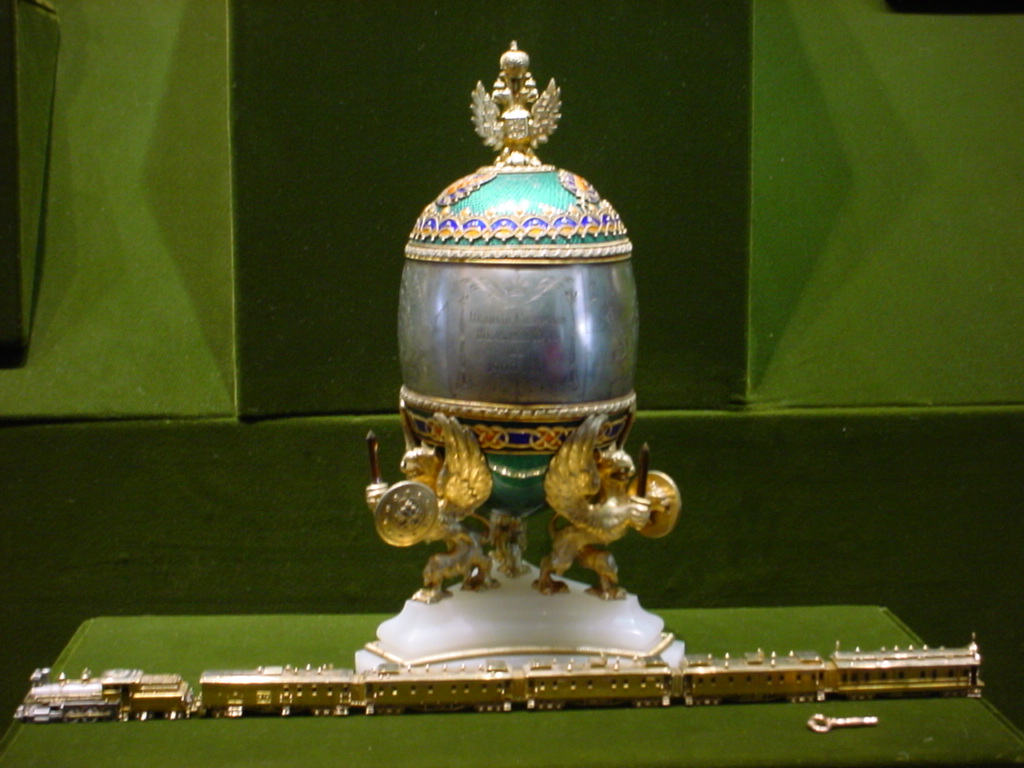
The Fabergé company of St Petersburg created the world-famous Fabergé eggs, with one of its best known creations seen here: the Trans-Siberian Railway egg. It was made in 1900 for Tsar Nicholas II, and features a solid gold and platinum working clockwork model of the train itself. The actual railway’s construction continued at the time, at the cost of up to one hundred thousand lives.
Leaving the Kremlin and Red Square behind, a last look back at St Basil’s Cathedral, and Lenin’s Mausoleum on the right.

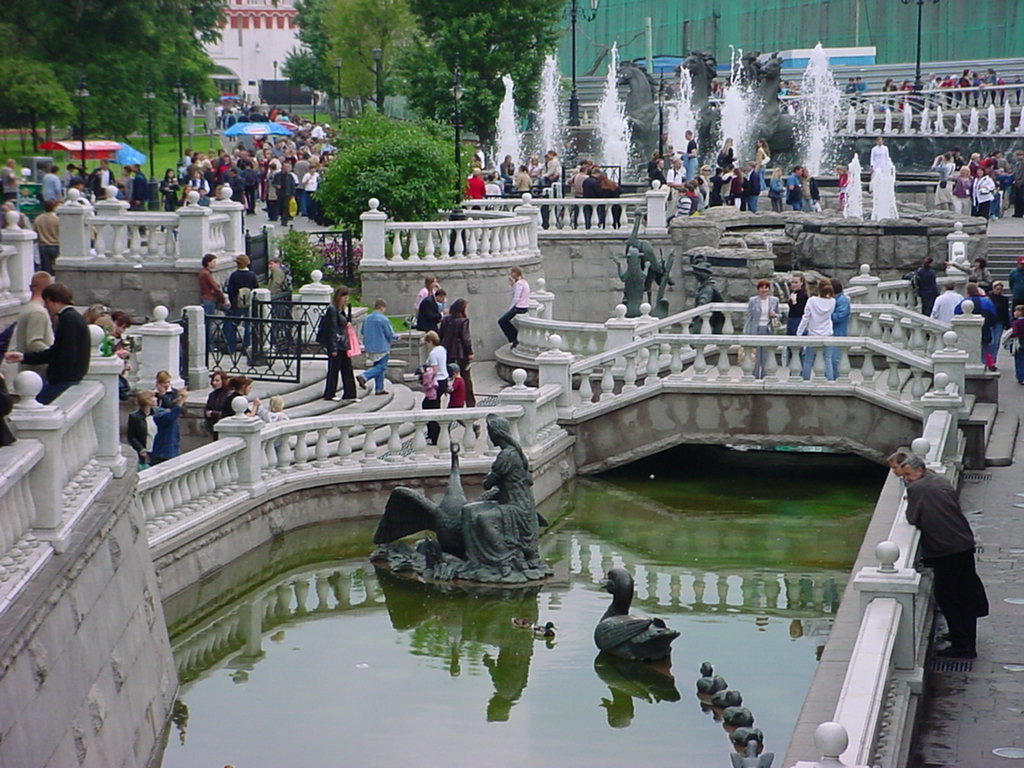
Manezhnaya Square lies to the north of Red Square, with an underground shopping mall as its centrepiece, plus this imitation section of the now-buried Neglinnaya River, decorated with statues from Russian fables. The equine fountain behind is called The Four Seasons.
View from our billet, Travellers’ Guest House on Bolshaya Pereyaslavskaya Ulitsa. It was in a similarly drab building as across the street, which was unsurprisingly not unlike other communist-shaped architecture as can be seen in the likes of East Berlin, or Glasgow. According to my 2024 research, the guest house is now student halls.

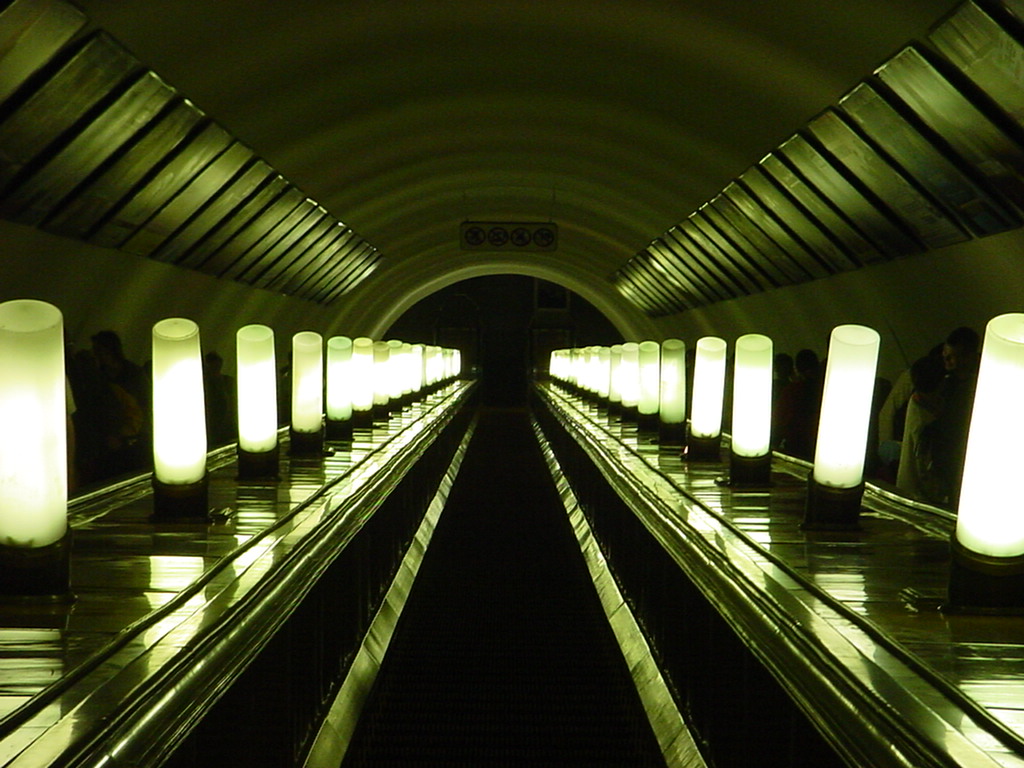
We used the Moscow metro for all our journeys across town, along with millions of Muscovites, it being the world’s busiest metro. Operations must be very well orchestrated, as there are no more than thirty seconds between trains on the circular line. It is also one of the world’s deepest metro systems, with creaking wooden escalators descending hell-ward. Many stations were built hundreds of feet down so that they could double as nuclear shelters.
One of Stalin’s more popular legacies in Moscow was his construction of the splendiferous metro stations around the city centre. Statues, mosaics, chandeliers and stained glass abound in these underground palaces of urban transport, which are a tourist attraction in themselves. Some of the salvaged marble from the demolished Church of Christ the Saviour was even incorporated into the stations. This was our local station, Prospekt Mira, on the Koltsevaya circle line, which hosts the most splendid examples.


The Ostankino Tower was at the time of my visit the second-tallest freestanding structure in the world, after Toronto‘s CN Tower. Built in 1967, it stands 540 metres to the top. There was a fire in 2000 in the large pod towards the summit, damaging it to such an extent that demolition was considered. It still pokes skyward today, but tourists have not been allowed inside since the fire.
Stalin’s final architectural legacy on Moscow was his “Seven Sisters”, a series of buildings resembling wedding cakes or hypodermic syringes, depending on your take. This picture of the Kotelnicheskaya Embankment Building was taken from inside the Kremlin walls, hence the red turret on the right. It has twenty-two usable floors across its 176 metre height and serves as an apartment building.


Moscow State University is the largest of Stalin’s Seven Sisters, built in the early 1950s but in the art-deco style common of New York in the 1930s. The architect, Lev Rudnev, was also responsible for the Palace of Culture and Science in Warsaw, Poland. It stands 240 metres tall with 36 floors, and has over six thousand rooms. Only the central section is seen here.
Four gigantic wings span off in each direction from the central tower of Moscow State University. Construction was mostly carried with forced labour by prisoners. It was the tallest building in Europe from its completion until 1990 when overtaken by a tower in Frankfurt.


Opposite Moscow State University is the 1980 Olympics Park, with Luzhniki Stadium in the distance. The games were famously boycotted by the United States (plus many other nations), which led to the Soviet boycott of the subsequent games in 1984 in Los Angeles. Ski jumps occupy the hillside and we even used the chairlift to get up to the top, being the lazy lumps that we were.
Created 2004 | Updated 2015, 2024
